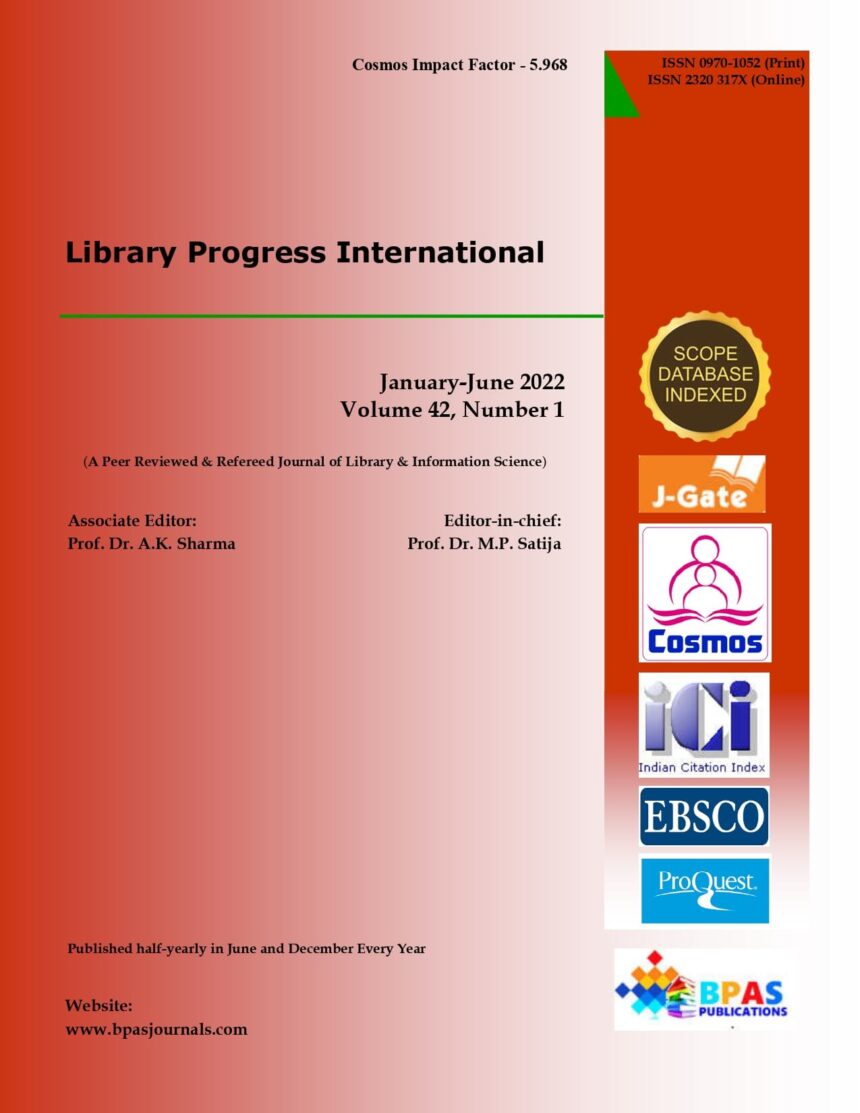Use of Assistive Technologies for Inclusive Education in Visva Bharati Library Network
DOI:
https://doi.org/10.48165/Keywords:
Assistive Technologies, Inclusive Education, Visva-Bharati, Visva-Bharati Library Network, BrailleAbstract
Developing countries are facing various problems in the process of implementing inclusive education. Assistive technology is any device, software, or equipment that helps people work around their challenges. Assistive technologies (AT) can help to achieve inclusive education for people having disabilities in academic institutions (Ministry of Human Resource Development, Government of India, 2020). This paper will provide brief ideas about the different types of Assistive technologies (AT) assisting persons to having different kinds of impairments for their Inclusive Education. This is a case study of the Visva-Bharati Library Network to know how Assistive technologies (AT) are being effectively used for inclusive education in Visva-Bharati. The present paper is an extension of literature, initially submitted as a project in Two Week Online National Faculty Development Program / Refresher Course jointly organized by Maitreyi College, University of Delhi, and Guru Angad Dev Teaching Learning Centre, SGTB Khalsa College, the University of Delhi under the Pandit Madan Mohan Malaviya National Mission on Teachers and Teaching (PMMMNMTT) of Ministry of Education during 20th March to 3rd April 2021.
Downloads
References
Ahmad, F. K. (2015). Use of Assistive Technology in Inclusive Education: Making Room for Diverse Learning Needs. 6(2), 16.
Das, T. K., Sharma, A. K., & Gurey, P. (2009). Digitization, Strategies & Issues of Digital Preservation: An Insight View to Visva-Bharati Library. Strate Gies, 6.
Grönlund, Å., Lim, N., & Larsson, H. (2010). Effective Use of Assistive Technologies for Inclusive Education in Developing Countries: Issues and challenges from two case studies. International Journal of Education and
Development Using Information and Communication Technology, 6(6), 5–26. 4. Hoogerwerf, E.-J., Mavrou, K., & Farris, I. (2021). The Role of Assistive Technology in Fostering Inclusive Education: Strategies and Tools to Support Change. Routledge & CRC Press. https://www.routledge.com/The Role-of-Assistive-Technology-in
Fostering-Inclusive-Education
Strategies/Hoogerwerf-Mavrou
Traina/p/book/9781138370081
Ministry of Human Resource Development, Government of India. (2020). National Education Policy. Ministry of Human Resource Development, Government of India. https://www.education.gov.in/sites/upl
oad_files/mhrd/files/NEP_Final_English _0.pdf
Spalding University. (n.d.). Spalding University Library: Accessibility: Assistive Technologies. Retrieved March 26, 2021, from
https://library.spalding.edu/c.php?g=528 158&p=3663797
Stanberry, K. (2011). Assistive technology tools: Writing. Parenting. https://www.greatschools.org/gk/article s/writing-tools/
United Nations. (2015). Convention on the Rights of Persons with Disabilities (CRPD) | United Nations Enable. https://www.un.org/development/desa
/disabilities/convention-on-the-rights-of persons-with-disabilities.html
Visva-Bharati. (2019). Annual Report 2018- 19.

